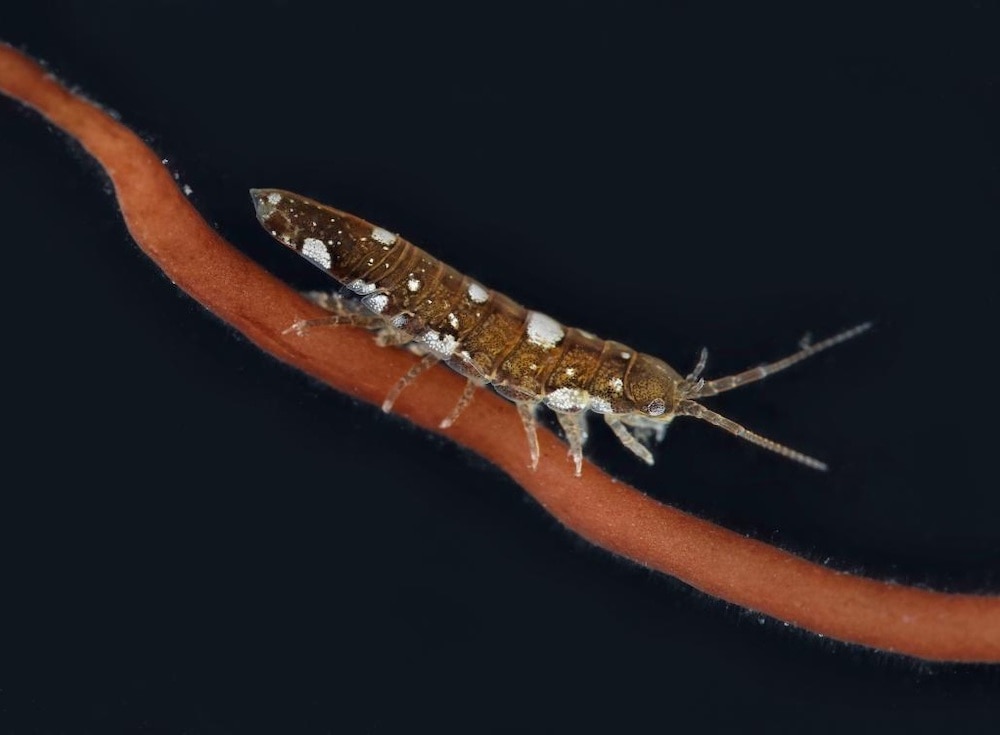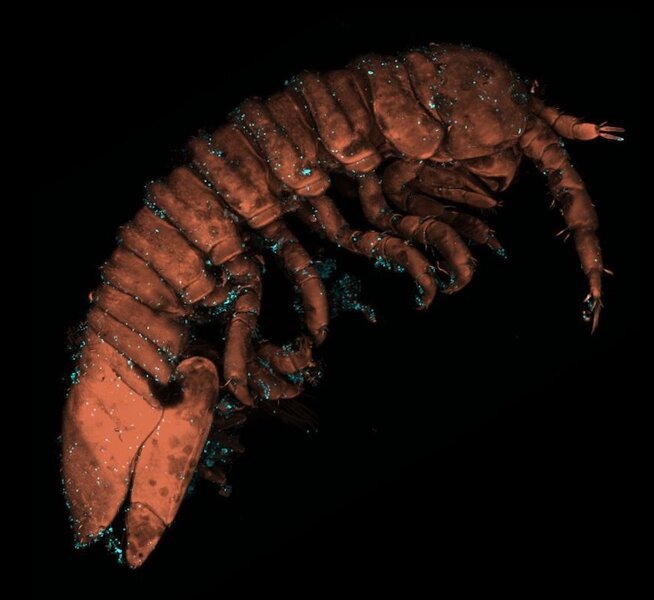Create a free profile to get unlimited access to exclusive videos, sweepstakes, and more!
Small crustaceans are the underwater pollinators science didn't think existed
The algae and the isopods... doesn't have quite the same ring as the birds and the bees.

In a way, our planet is like two separate worlds, one which exists on the surface and another beneath the water. While the two worlds are intrinsically linked, there’s a lot about the ocean ecosystems which is mysterious and wholly different from those on land. It’s no wonder that the world’s ocean have inspired countless exploratory documentaries like Planet Ocean as well as endless studies, each of which attempt to unravel the truth about what’s going on down there.
While it’s true that life began in the water, only emerging onto the land relatively recently on a geological timescale, land-based organisms have undergone incredible changes in their morphology and behavior such that, in many cases, they’re nearly unrecognizable from their water-dwelling ancestors. Fins became arms and legs, plants grew rigid to reach into the sky, and a whole host of symbiotic relationships developed which simply don’t exist underwater. Or so we thought.
Many land-based plants rely on animal pollinators to help carry their genetic material to a mate. Our ecosystem, such as it is, wouldn’t last very long without insects, birds, and other animals picking up pollen and transporting it. However, it has long been believed that plants in the ocean don’t need help, instead depending on the swaying of the water to carry their genetic material where it needs to go. Now, a new study published in the journal Science is tossing that notion into the drink.
Myriam Valero, a scientist at the Centre National de la Recherche Scientifique, and colleagues, have confirmed a symbiotic relationship between red algae and a small marine crustacean which mirrors in some ways that between flowers and bees.
“Red algae have gametes that are produced in the water. They have no pollen and no flower, but the question is the same. The parallel is there. The question is how gamete transfer is maximized,” Valero told SYFY WIRE.
It’s likely, as was previously assumed, that water flow contributes to the movement of gametes between male and female red algae — a form of seaweed — but its contribution is relatively low. That’s because the species of seaweed researchers investigated lives inside rocky pools where water movement is comparatively minimal. Moreover, most of the fertilization was found to occur during low tide when the water inside the pools is most calm. How then, do these plants become fertilized? Enter the humble idotea, a small isopod not unlike the pill bugs you find wandering in your garden.
The idotea spend their lives climbing back and forth along the surfaces of various red algae plants and researchers suspected they might be contributing to fertilization. To find out, they designed two experiments to isolate the processes at work.
“In the first experiment we put male and female algae in an aquarium [by itself] and in another aquarium we added idotea. We found there were more fertilizations when there were idotea,” Valero said.
That, on its own, was interesting evidence but didn’t necessarily confirm that the idotea were responsible for gamete transport. Researchers realized that the movements of the animals might cause sufficient perturbation of the water to knock genetic material loose like seeds on the wind. That’s where the second experiment came into play.
“In the next experiment, we put the idotea in with male algae and then we moved them into a tank with female algae. There were fertilizations. That was the proof that it was really by idotea carrying sperm that fertilization occurred,” Valero said.
The whole arrangement happens without the isopods even being aware of it, although they’d probably be happy to oblige, because the relationship is beneficial to them as well. Idotea hang onto the algae to protect themselves from being swept away and they also find sustenance in the form of tiny organisms on the algae’s surface. Meanwhile, as they make their way to and fro, the red algae are busy producing genetic materials. Gametes from male plants are covered in a sticky substance which clings to the body surface of the isopods. Later, when they come into contact with a female plant, they dislodge, and the cycle is complete. The discovery of animal fertilizers in the ocean could change the way we understand the relationship between plants and animals.
“Red algae is much older than higher plants. We hypothesize this relationship might have appeared in evolution much earlier than what was supposed,” Valero said.
In fact, previous estimates put the origin of animal-mediated fertilization somewhere between 140 and 450 million years ago, but this new discovery could push that date back to 650 million years ago, before plants even made their way onto land. It’s also possible that these relationships evolved independently multiple times in various ways.
In any event, the red algae are getting along quite nicely, with a little help from their fronds. And, of course, the idotea.



























